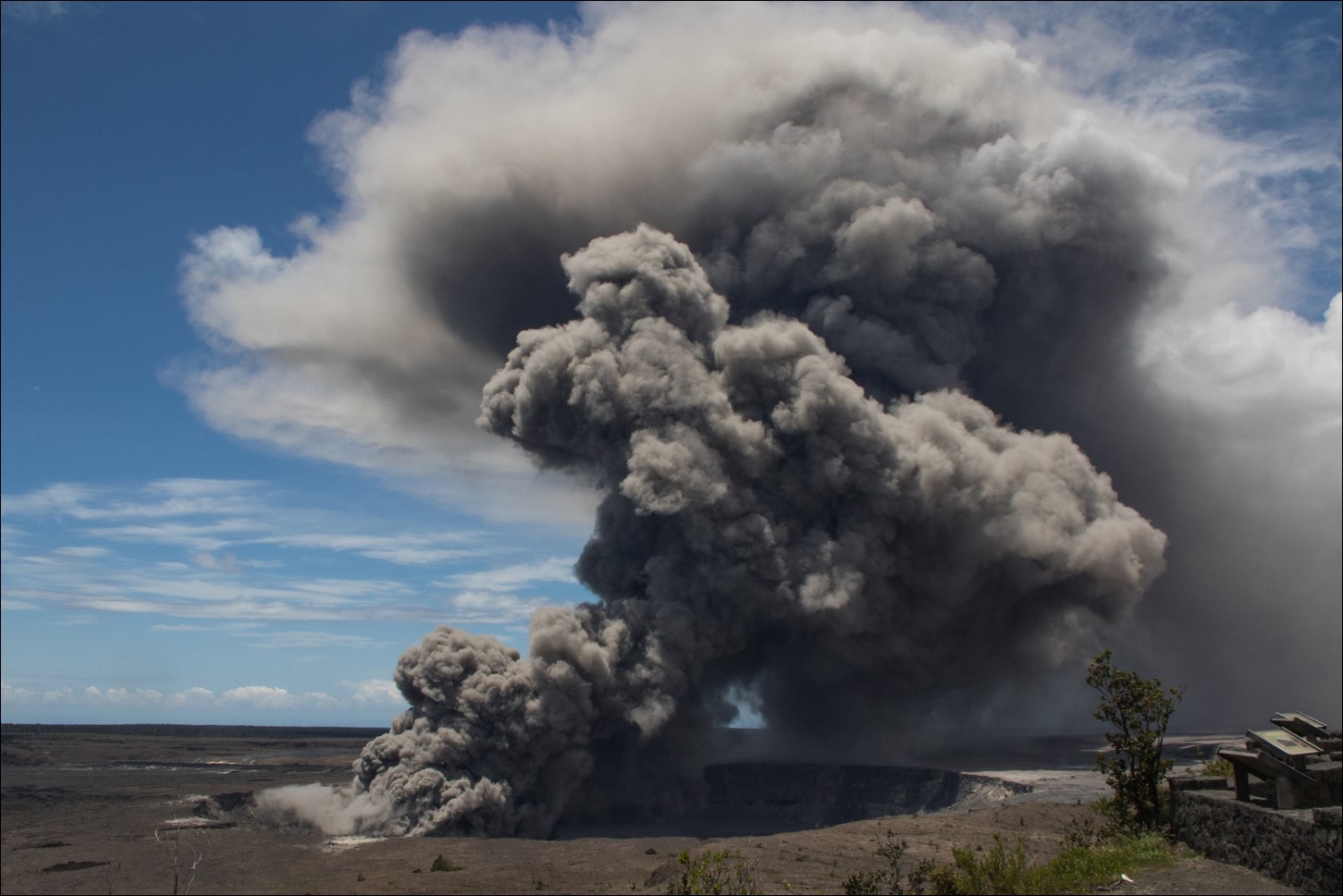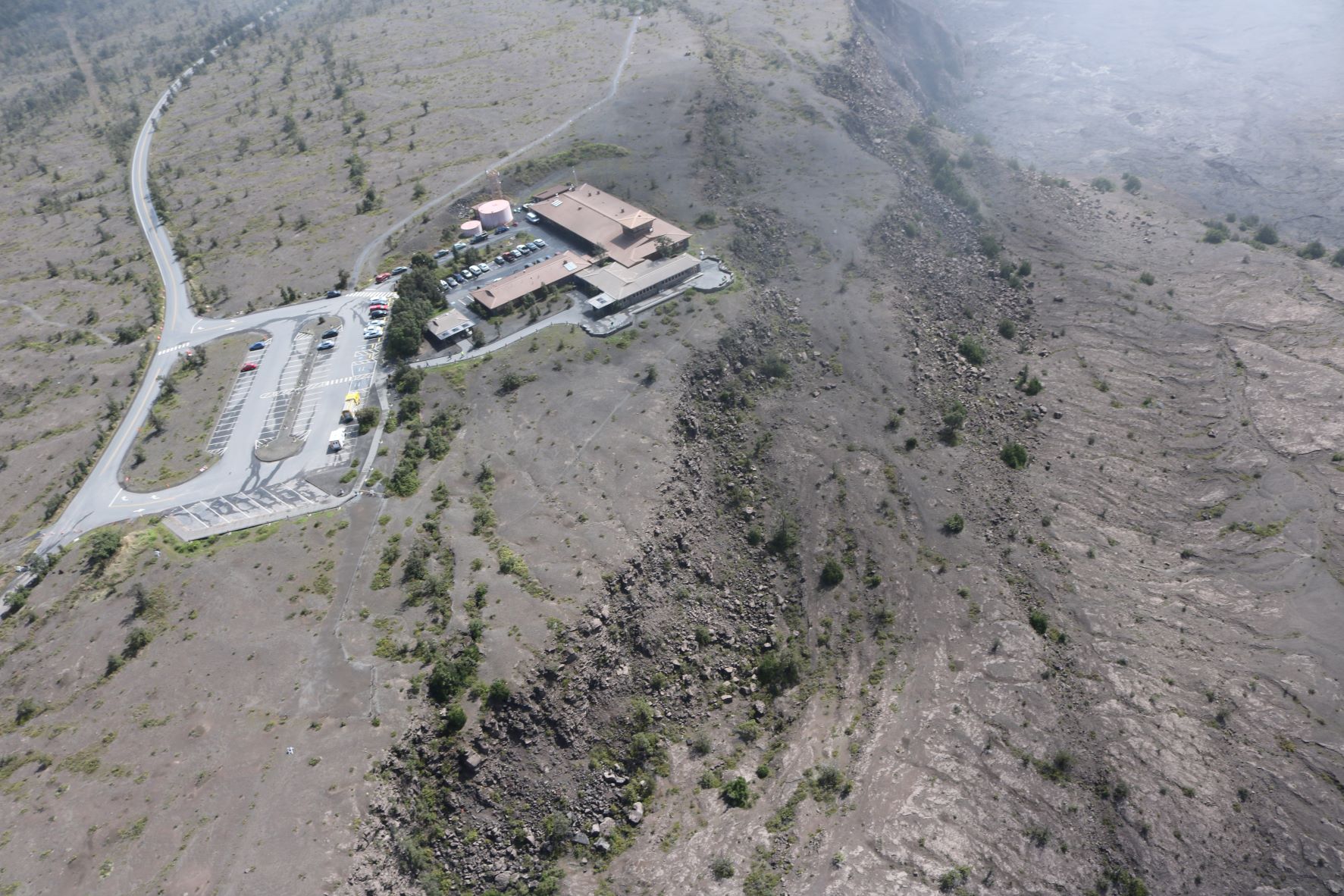2/14/2022: The National Park Service has scheduled two public meetings to gather input for the environmental assessment for buildings, facilities and infrastructure damaged during the 2018 eruption and summit collapse of Kīlauea crater at Hawai‘i Volcanoes National Park.
The project will include plans for visitor service and administrative sites and addresses potential future use of the Uēkahuna Bluff area.
Beginning in May 2018, the park and Kīlauea summit underwent a major change as magma drained from the chamber beneath Halema‘uma‘u Crater, and the caldera began to collapse, triggering thousands of felt earthquakes and clouds of rock and ash that continued until early August.
The seismic activity was primarily centered near the crater, and significantly impacted buildings in the immediate vicinity on Uēkahuna Bluff, including Jaggar Museum (a visitor center) and Reginald T. Okamura (Okamura) building of the USGS Hawaiian Volcano Observatory (HVO) facility, resulting in the current closure of the area. The 2018 eruption and caldera collapse were the most destructive eruptive events in Hawai‘i in the last two centuries, and the park closed to the public for 134 days.
NPS post-disaster assessments found that significant investment would be necessary to make Jaggar Museum and the USGS Hawaiian Volcano Observatory-operated Okamura building and Geochemistry Annex safe to occupy and operational. The buildings are surrounded by fault lines and the area continues to subside on the crater side, undermining slope stability at the existing terraces and building foundations.
Project information and meeting notices are available at https://parkplanning.nps.gov/HAVODisasterRecovery
Two public meetings are scheduled about the scope of the environmental assessment.
- Thursday, February 24, 2022
12:00 – 1:00 p.m. HST
Join the online meeting: https://swca.zoom.us/j/91430664015 - Thursday, February 24, 2022
6:00 – 7:00 p.m. HST
Join the online meeting: https://swca.zoom.us/j/97252271515
Historic Hawai‘i Foundation is participating in the National Historic Preservation Act Section 106 consultation for the projects, including mitigation measures for the loss of historic buildings and features, as well as impacts to other cultural resources. The Section 106 process also includes review of the proposed designs for the new buildings and facilities at Uēkahuna Bluff, a new HVO field station near Kīlauea Military Camp Historic District, a new and expanded Visitor Center and changes to the park entrance way.
Images above: Kīlauea Crater eruption in 2018; Uēkahuna Bluff. Both courtesy of the National Park Service.



